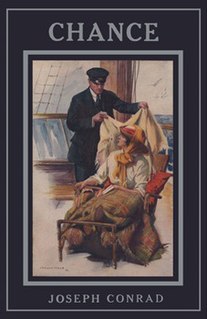 W
WChance is a novel by Joseph Conrad, published in 1913, following serial publication the previous year. Although the novel was not one upon which Conrad's later critical reputation was to depend, it was his greatest commercial success upon initial publication.
 W
WChild of Storm is a 1913 novel by H. Rider Haggard featuring Allan Quatermain. The plot is set in 1854-56 and concerns Quatermain hunting in Zululand and getting involved with Mameema, a beautiful African girl who causes great turmoil in the Zulu kingdom.
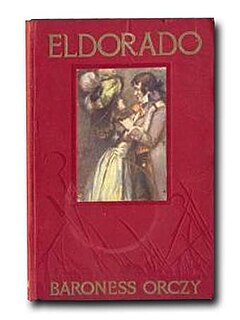 W
WEl Dorado, by Baroness Orczy is a sequel book to the classic adventure tale, The Scarlet Pimpernel. It was first published in 1913. The novel is notable in that it is the partial basis for most of the film treatments of the original book.
 W
WThe End of Her Honeymoon is a 1913 novel by the British writer Marie Belloc Lowndes.
 W
WThe Fourth Plague is a 1913 British thriller novel by Edgar Wallace.
 W
WGrey Timothy is a 1913 sports thriller novel by the British writer Edgar Wallace. Brian Pallard, an Australian gambler arrives in Britain clashes with a rival English aristocrat at the racetrack.
 W
WThe Knave of Diamonds is a 1913 romance novel by the British writer Ethel M. Dell.
 W
WThe Laughing Cavalier is a 1913 adventure novel by Baroness Orczy, which revolves around Percy Blakeney, a foreign adventurer and ancestor of Orczy's famous character, the Scarlet Pimpernel. The story takes place in Holland in 1623/1624 and is partly inspired by Frans Hals' painting The Laughing Cavalier: in the novel, Blakeney is Frans Hals' adopted son and the man who poses for the painting of the Laughing Cavalier.
 W
WThe Little Nugget is a novel by P. G. Wodehouse. It was first published in Munsey's Magazine in August 1913, before being published as a book in the UK on 28 August 1913 by Methuen & Co., London, and in the US on 10 January 1914 by W.J. Watt and Company, New York. An earlier version of the story, without the love interest, had appeared as a serial in The Captain between January and March 1913 under the title The Eighteen-Carat Kid; this version was not published in the US until August 1980, when it appeared in a volume entitled The Eighteen-Carat Kid and Other Stories. The Little Nugget was reprinted in the Philadelphia Record on 12 May 1940.
 W
WThe Lodger is a novel by English author Marie Adelaide Belloc Lowndes. The short story was first published in the last edition of McClure's Magazine, in 1911. Belloc Lowndes wrote a longer version of the story, which was published as a series in the Daily Telegraph in 1913 with the same name. Later that year, the novel was published in its entirety by Methuen Publishing.
 W
WMaurice is a novel by E. M. Forster. A tale of homosexual love in early 20th-century England, it follows Maurice Hall from his schooldays through university and beyond. It was written in 1913–1914, and revised in 1932 and 1959–1960. Forster was an admirer of the poet, philosopher, socialist and early gay activist Edward Carpenter, and following a visit to Carpenter’s home at Millthorpe, Derbyshire in 1913, was inspired to write Maurice. The cross-class relationship between Carpenter and his working-class partner, George Merrill, presented a real-life model for that of Maurice and Alec Scudder.
 W
WThe Mystery of Dr. Fu-Manchu (1913) is the first novel in the Dr. Fu Manchu series by Sax Rohmer. It collates various short stories that were published the preceding year. The novel was also published in the U.S. under the title The Insidious Dr. Fu-Manchu and was adapted into the film The Mysterious Dr. Fu Manchu.
 W
WOld Friends and New Fancies: An Imaginary Sequel to the Novels of Jane Austen (1913) is a novel by Sybil G. Brinton that is generally acknowledged to be the first sequel to the works of Jane Austen and as such the first piece of Austen fan fiction. It incorporates characters from each of Austen's six major novels into one unified story, alongside characters of Brinton's own invention. Keeping to the spirit of the source novels, its major theme is the difficulties faced by assorted pairs of lovers placed within the class structure of early 19th century Britain.
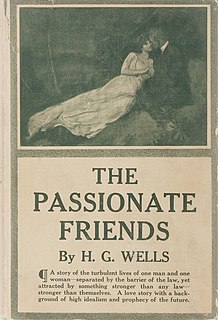 W
WThe Passionate Friends is a 1913 novel by H. G. Wells.
 W
WThe Poison Belt is a science fiction novel by British writer Arthur Conan Doyle, the second book about Professor Challenger. Written in 1913, much of it takes place in a single room in Challenger's house in Sussex. This would be the last story written about Challenger until the 1920s, by which time Doyle's spiritualist beliefs had begun to influence his writing.
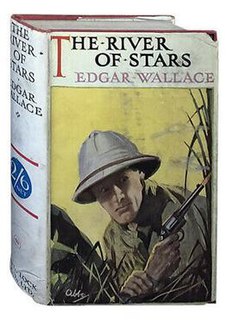 W
WThe River of Stars is a 1913 novel by the British writer Edgar Wallace. It was part of a series of stories in which the character of Commissioner Sanders appears, set in British West Africa.
 W
WSinister Street is a 1913–1914 novel by Compton Mackenzie. It is a kind of bildungsroman or novel about growing up, and concerns two children, Michael Fane and his sister Stella. Both of them are born out of wedlock, something which was frowned upon at the time, but from rich parents.
 W
WSons and Lovers is a 1913 novel by the English writer D. H. Lawrence, originally published by Gerald Duckworth and Company Ltd., London, and Mitchell Kennerley Publishers, New York. While the novel initially received a lukewarm critical reception, along with allegations of obscenity, it is today regarded as a masterpiece by many critics and is often regarded as Lawrence's finest achievement.
 W
WTrent's Last Case is a detective novel written by E. C. Bentley and first published in the United Kingdom in 1913, and as The Woman in Black in the United States also in 1913. Its central character is the artist and amateur detective Philip Trent. Despite the title, Trent's Last Case is the first novel in which he appears. He subsequently reappeared in the novel Trent's Own Case (1936) and the short-story collection Trent Intervenes (1938).
 W
WUndergrowth is a 1913 novel by the British writer Francis Brett Young, co-written with his brother Eric. It marked the debut for Francis who was later to emerge as one of the most popular British writers of the interwar years. The story is based on the construction of the Elan Valley Reservoirs, a subject that he later returned to more successfully in The House Under the Water in 1932.
 W
WThe Village in the Jungle is a novel by Leonard Woolf, published in 1913, based on his experiences as a colonial civil servant in British-controlled Ceylon in the early years of the 20th century. Ground-breaking in Western fiction for being written from the native rather than the colonial point of view, it is also an influential work of Sri Lankan literature. It was republished by Eland in 2008.
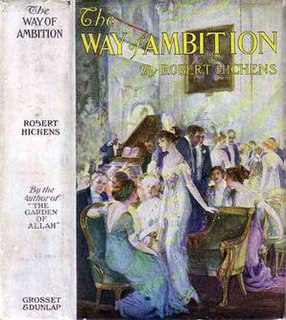 W
WThe Way of Ambition is a 1913 novel by the British writer Robert Hichens. An young woman marries a musical genius and ambitiously manages his career.
 W
WWitching Hill is a collection of short stories by E. W. Hornung. Its eight individual stories were first serialized in Scribner's Magazine from February to September 1912. The collection was published in February 1913 by Hodder & Stoughton, in London.
 W
WThe Witness for the Defence is a 1913 melodramatic novel by A.E.W. Mason. It was adapted by Mason from a 1911 play he had written. In 1919 it was made into an American silent film The Witness for the Defense directed by George Fitzmaurice.